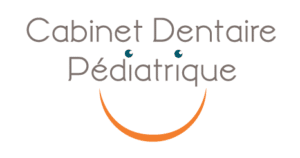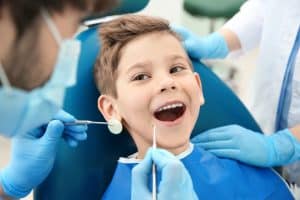Orthodontics is a treatment that corrects the position of the teeth and jaw. Children as young as 4 years old can have orthodontic treatment with different types of treatments and devices.
The cost of orthodontic treatment can be high, we explain it all to you.
What are the costs of orthodontic treatment for children?
The cost of orthodontics for a child with poorly positioned teeth is manifold and the bill can quickly escalate.
These costs depend largely on the type of treatment: functional educator, resin appliance, metal braces or clear braces, aligners.
Orthodontic care for a child: prices vary depending on the treatment
Here is a summary of the different types of fees you can expect if your child needs orthodontic care.
| Types of care | Price range |
| False palate (also called pink palate) | 300 à 1200€ |
| Functional educator | 40 à 60€ |
| Orthodontic gutter | 550 à 3000€ |
| Rings | 500 à 1500€ |
| Restraint device | 300 à 400 € |
In addition to the type of treatment, the cost of orthodontic treatment for a child depends on several other factors, including
- The reputation of the dental office,
- Its location.
Studies have shown that the average cost of a semester of active treatment is €611 and €355 for a year of restraint.
However, this rate hides great inequalities depending on the region where the care is received. The price of a half-year of treatment can vary from 408 € in the Cantal to 984 € in the Paris region.
Cost and coverage of orthodontic care for a child
Social security reimbursements
To be able to benefit from health insurance reimbursementIn order to be eligible for orthodontic treatment, it is necessary that your child's orthodontic treatment begins before he or she turns 16. The Social Security covers part of the treatment for a maximum of six semesters, which can be consecutive or not.
For example, early orthodontic treatment can be provided for a short period of time when the child is about seven years old and a second treatment can be provided when the child is a teenager.
Here are the different reimbursements granted by the Social Security:
| Treatment | Basis of reimbursement | Rate of reimbursement | Reimbursement workforce |
| Basic consultation | 23 € | 70 % | 16,10 € |
| Pre-treatment balance sheet | 43 € | 70 % | 30,10 € |
| Treatment semester | 193,50 € | 100 % | 193,50 € |
| 1st year of restraint | 161,25 € | 100 % | 161,25 € |
| 1st year of restraint | 107,50 € | 70 % | 75,25 € |
Health insurance reimburses a portion of the care - between 70 % and 100 % of the basic rates - but the remaining out-of-pocket expenses remain significant.
It is important to know that only the professionals of sector 1 are obliged to practice the basic rates of the Social Security. Other dentists are free to set their own fees, and any extra charges are not covered by the health insurance.
Reimbursements from mutual insurance companies
Supplementary health insurance also covers part of the orthodontic treatment. Some of them reimburse the co-payment, while others cover part of the extra fees, or even the entire orthodontic treatment.
It is important to get several estimates to choose the best treatment. You can also contact your health insurance company to ask for the exact amount of money you will have to pay according to the practitioners' estimates.
3 reasons to see an orthodontist
From infancy onwards, poorly positioned teeth or jaws can cripple your baby. There are several main problems that require orthodontic treatment:
- A gap in the jaw,
- A recessed lower jaw that increases the risk of fractures of the upper teeth,
- A jaw that is too small, resulting in poor positioning of the permanent teeth with overlapping. This can be corrected in orthodontics with a growth activator,
- An offset of the jaws (class 3, mandible larger than maxilla).
Untreated problems can have long-term consequences for a child's development. If there are signs that your child needs orthodontic care, see an orthodontist right away.
The different types of orthodontic treatment
From the age of four, preventive treatments can be implemented to correct the gap. Among these interceptive orthodontic treatments for young childrenA dental helmet is generally used to be worn at night. Wearing this device allows the teeth to position themselves better.
From the age of nine, treatments to correct the position of the jaw can be considered. These include orthodontic interception treatmentsYou will need to wear your child's braces at night in most cases. Be careful, however, if your child is in the habit of breathing through the mouthComplications may arise during these treatments.
As soon as the teeth are permanent, around the age of eleven, it is possible to consider braces. These treatments allow for proper alignment of the permanent teeth.
Children often have a jaw that is too small for the size of their teeth. This disproportion can cause teeth to overlap if orthodontic treatment is not implemented.




